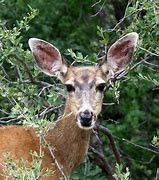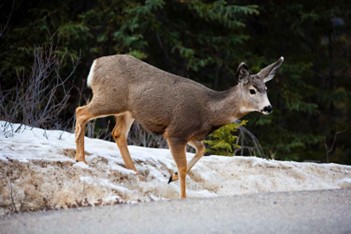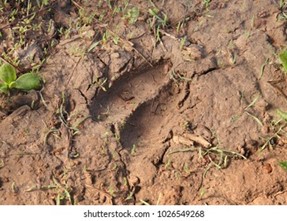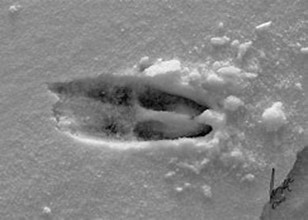

The first time I came “face to face” with a mule deer was when I had just ventured out into our garden, walking toward the back fence and was met with a surprised look from a deer as it stood on my side of the fence. It was checking out the vegetable garden beneath its cloven (split) hooves…We were no more than 6 feet apart! We stared at each other for perhaps a few seconds before -what I at first glance thought to be a donkey(!). It was not scared and probably saw me coming before I saw it, it did not stomp its hooves! It bounced or “stotted” up, (I swear it was one bounce) and over the 4 feet high fence to the Chia property. The deer stopped on the other side of the fence and stared at me for another minute while I was still frozen in place before it walked into the forest. The ears were very large and the deer itself is not very tall… now I know why the species is called: “mule deer”! The deer, I saw must have been a female… it was in early summer, and males would have already had partial stubs of new antlers showing. She may have had a fawn hiding in the forest!
Here are some interesting facts:
- Mule deer are indigenous to Western North America and are named for their large ears.
- Only males grow antlers, they are shed in Spring, Mule deer antlers are forked, not points growing from a central branch like other deer, they also are spaced wider on their heads.
- Blacktail deer are members of the same species.
- Their ears are 3/4 of their head size.
- Mule deer have no upper teeth, instead they have a hard upper palate.
- Like cows, deer are ruminants, they chew their cud regurgitated from their rumen
- Their coat is brownish grey with a white rump patch and a black muzzle on their face and a small white tail with a black tip.
- They are very adaptable and can be found in mountains, valleys, dense forests and rangelands.
- Their lifespan is from 9 to 11 years in the wild, older in captivity.
- The size of this species is 3 to 3 1/2 feet tall at shoulder (!) and between 130 to 280 lbs., the female is smaller than the male.
- In their second year the females give birth in Spring to one fawn for the first time and at subsequent births two fawns, most of the time.
- They can give birth every year throughout their life. Unfortunately, 40 to 70% of fawns die in the first year!
- In the interior of BC, the First Nations peoples used Mule deer extensively, especially the meat, bones and antlers. When running they bound in a motion called: stotting, with all 4 hooves pushed off the ground.
Predators include coyotes, eagles, bears, wolves and cougars. Starvation and hunting by humans are also factors. Mule deer make temporary “beds” by flattening grass or they scratch a depression in soil with their hooves. They can jump more than 8 feet!
Most likely the best time to spot them is when they come out of hiding to feed at dawn and at dusk. Foods include leaves, berries, lichen and they eat a bit of everything or “browse”. In summer favorites are: fireweed, blackberry, salmonberry, willow leaves and grasses (forbs) and herbs. They also forage for grains on fields.
They don’t shy away from eating our roses and fruit trees if given a chance in Country Woods.
I spotted two Mule Deer coming home by car in the Fall, standing in front of our new front yard fence, like they were wondering who put that in place and how to get into the forest now, I waited and soon they figured out that they could go around at the end of fence and happily bounced back into the forest.
Try to spot deer tracks in the fresh snow this week!


